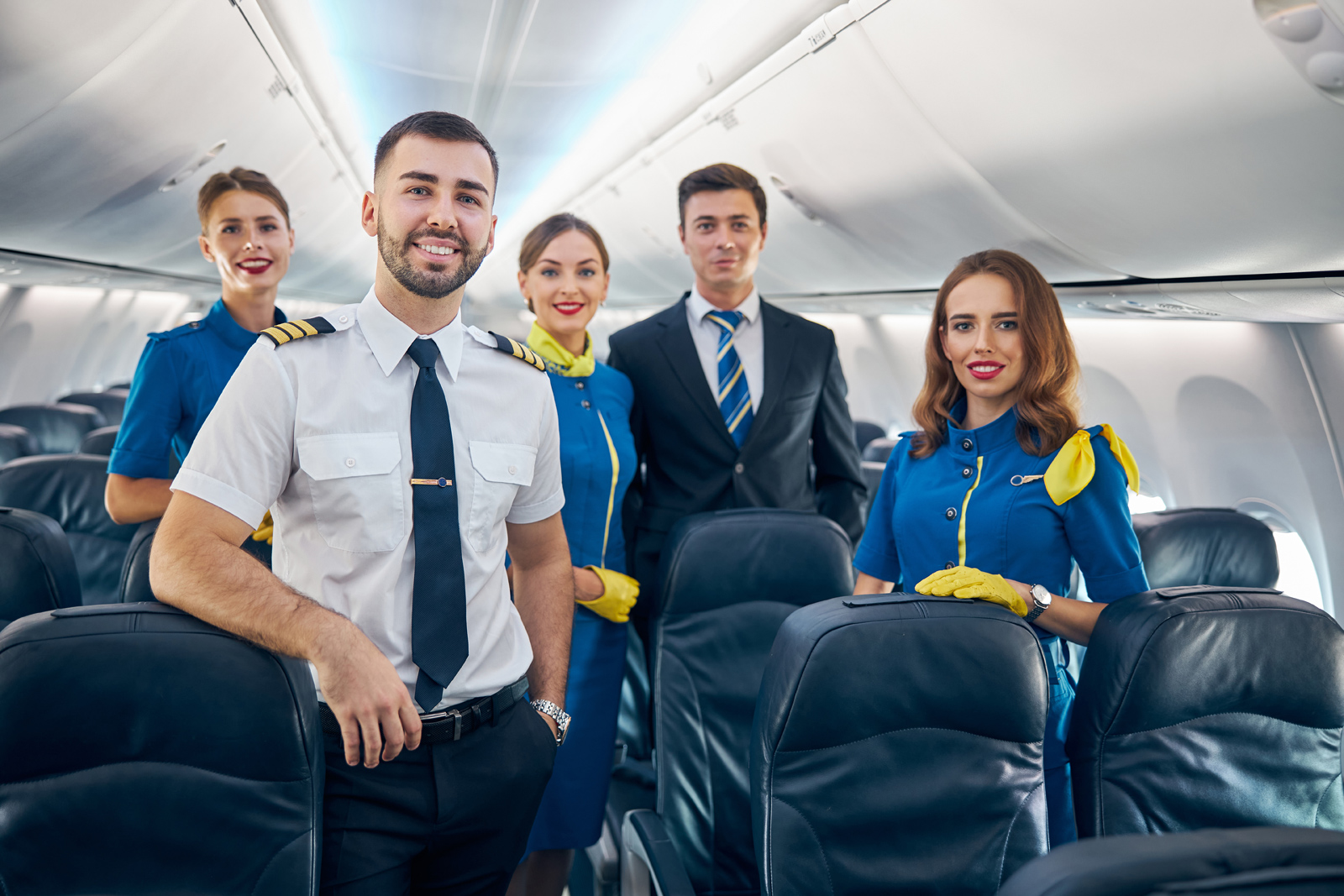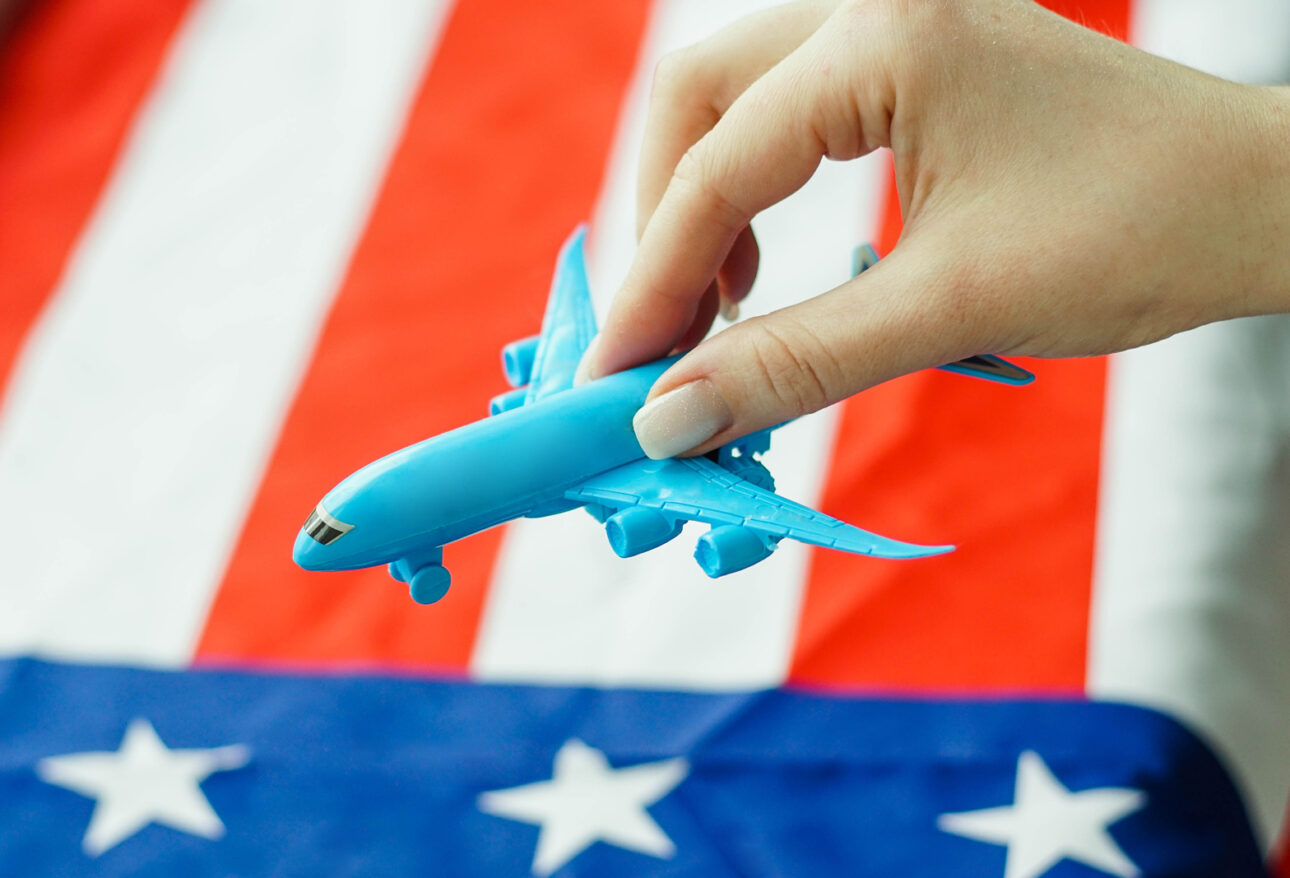Traveling can be an exciting adventure, but it can also be a stressful experience, especially when it comes to selecting the perfect airline for your journey. With countless options available, finding the best US airline for your needs requires careful consideration of various factors such as on-time performance, customer service, pricing, and in-flight amenities. This comprehensive guide will help you navigate the ever-evolving airline industry in the United States and make an informed decision based on your specific travel preferences.
We’ll explore the criteria for ranking the best US airlines, providing a detailed overview of the top choices in 2023 and their strengths and weaknesses. Additionally, we’ll dive into the best airlines for different traveler types, such as budget-conscious, business, and eco-friendly travelers, ensuring you find the perfect airline for your unique needs.
By taking into account factors like loyalty programs, airline innovations, and health and safety measures, this guide will equip you with valuable tips and insights for maximizing your flight experience. Also Read: The best airlines in the world

On-time performance: The punctuality of flights is a critical factor for many travelers. Airlines with higher on-time performance percentages minimize delays and ensure a smooth travel experience.
Customer service: The quality of customer service, including responsiveness to inquiries, problem resolution, and overall satisfaction, plays a significant role in the perception of an airline.
Baggage handling: Airlines that handle luggage efficiently and minimize lost or damaged baggage incidents can improve their ranking.
In-flight amenities: The availability and quality of in-flight amenities, such as entertainment systems, Wi-Fi, comfortable seating, and meal options, contribute to a positive travel experience.
Pricing and fees: Competitive ticket prices and transparent fee structures for services like baggage and seat selection can make an airline more attractive to budget-conscious travelers.
Loyalty programs: Airlines with rewarding loyalty programs that offer benefits like free checked bags, priority boarding, and frequent flyer miles can influence customer loyalty and satisfaction.
Route network: An extensive route network with a variety of non-stop and connecting flights can make an airline more appealing to travelers with diverse destination needs.
Safety record: A strong safety record and a history of a few incidents are essential factors to consider when evaluating an airline.
Cabin cleanliness and comfort: Clean and comfortable cabins with ample legroom contribute to a pleasant flight experience.
Environmental impact: Airlines that prioritize sustainability and adopt eco-friendly practices may be more attractive to environmentally conscious travelers.
1. Delta Airlines
Delta Airlines, one of the major carriers in the United States, has a long and storied history that dates back nearly a century. With its headquarters in Atlanta, Georgia, the airline has grown to become a global powerhouse, offering passengers an extensive route network, a commitment to innovation, and a focus on customer service.

Founded in 1924, Delta Air Lines initially began as a crop-dusting operation called Huff Daland Dusters. As of May 29, 2023, Delta Air Lines has a fleet of 956 aircraft. This includes 501 Boeing aircraft and 455 Airbus aircraft. The average age of the fleet is 15.1 years. Delta Air Lines is the largest airline in the world by fleet size serving more than 300 destinations across 50 countries. Delta is a founding member of the SkyTeam airline alliance and has code-share agreements with various international carriers, further expanding its reach.
History: Over the years, Delta has experienced significant growth and change. Its first passenger flight took place in 1929, and the airline has since expanded through multiple mergers and acquisitions, including those with Northeast Airlines, Western Airlines, and most notably, Northwest Airlines in 2008. These strategic moves have allowed Delta to strengthen its market position and become a dominant force in the aviation industry.
Routes: Delta’s route network is vast, offering passengers an impressive array of domestic and international destinations. The airline serves major cities across the United States, as well as popular destinations in Europe, Asia, Africa, the Middle East, and Latin America. Delta’s primary hub is in Atlanta, with other major hubs in cities such as New York, Los Angeles, Detroit, and Seattle.
Vision: Delta’s vision is centered around connecting the world and creating memorable travel experiences for its customers. The airline is committed to investing in cutting-edge technology, improving in-flight amenities, and maintaining a focus on sustainability. Delta aims to be an industry leader in customer service, innovation, and environmental stewardship.
2. Southwest Airlines
Southwest Airlines, a leading low-cost carrier in the United States, has been a disruptor in the aviation industry since its inception. With a unique business model and a commitment to delivering low fares without compromising on customer service, Southwest has garnered a loyal following among travelers.

Founded in 1967 by Herb Kelleher and Rollin King, Southwest Airlines is headquartered in Dallas, Texas. As of May 29, 2023, Southwest Airlines has a fleet of 798 aircraft. This includes 773 Boeing 737 aircraft and 25 other aircraft. The average age of the fleet is 11.8 years. Southwest Airlines is the largest domestic airline in the United States by fleet size. Southwest Airlines serves over 100 destinations across the United States, Mexico, and the Caribbean.
History: Southwest Airlines began with a mission to make air travel more accessible and affordable for the average person. The airline’s first flights took place in 1971, and since then, Southwest has experienced rapid growth, becoming the largest domestic carrier in the United States by passenger volume. Southwest has maintained its focus on low fares, operational efficiency, and friendly customer service, setting it apart from many traditional carriers.
Routes: Southwest operates a point-to-point route network, which allows it to offer direct flights between cities without relying on a hub-and-spoke system. The airline primarily serves destinations within the United States, but it has also expanded its international offerings to include popular vacation spots in Mexico and the Caribbean.
Vision: Southwest’s vision is to make air travel accessible, affordable, and enjoyable for everyone. The airline is committed to maintaining low fares without hidden fees while providing exceptional customer service. Southwest also places a strong emphasis on employee satisfaction, fostering a positive company culture that translates to a better experience for passengers.
3. American Airlines
American Airlines, one of the largest airlines in the world, has played a pivotal role in shaping the aviation industry over the past century. With its extensive route network, diverse fleet, and commitment to innovation, American Airlines has become a top choice for travelers seeking a wide range of domestic and international destinations.

Established in 1930, American Airlines is headquartered in Fort Worth, Texas. As of May 29, 2023, American Airlines has a fleet of 942 aircraft. This includes 700 Boeing aircraft and 242 Airbus aircraft. The average age of the fleet is 12.7 years. American Airlines is the second largest airline in the world by fleet size. The airline serves over 350 destinations across 50 countries. American Airlines is a founding member of the Oneworld airline alliance, which further expands its global reach through partnerships with other carriers.
History: American Airlines has a rich history, beginning with the consolidation of several smaller carriers in the early 1930s. Over the years, American Airlines has expanded its network and fleet through mergers and acquisitions, such as those with Trans World Airlines (TWA) in 2001 and US Airways in 2013. These strategic moves have allowed American Airlines to strengthen its market position and become a dominant player in the industry.
Routes: American Airlines offers an extensive route network, serving destinations across the United States, Europe, Asia, Latin America, the Caribbean, and the Middle East. The airline has major hubs in cities such as Dallas/Fort Worth, Chicago, Miami, and Los Angeles, providing convenient connections for passengers traveling to various destinations.
Vision: American Airlines’ vision is centered on providing a seamless, comfortable, and enjoyable travel experience for its passengers. The airline is committed to investing in cutting-edge technology, enhancing in-flight amenities, and maintaining a focus on customer service. American Airlines aims to be an industry leader in safety, innovation, and environmental sustainability.
4. United Airlines
United Airlines, one of the major carriers in the United States, has a long-standing history in the aviation industry. With its wide-ranging route network, diverse fleet, and commitment to customer satisfaction, United has become a preferred choice for many travelers seeking domestic and international flights.

Founded in 1926, United Airlines is headquartered in Chicago, Illinois. As of May 29, 2023, United Airlines has a fleet of 892 aircraft. This includes 416 Boeing 737 aircraft, 200 Boeing 777 aircraft, 160 Boeing 767 aircraft, 52 Boeing 757 aircraft, 17 Boeing 787 Dreamliner aircraft, and 3 Airbus A321neo aircraft. The average age of the fleet is 16.6 years. United Airlines is the third largest airline in the world by fleet size serving more than 370 destinations across 60 countries. United is a founding member of the Star Alliance, the world’s largest airline alliance, which allows it to extend its global reach through partnerships with other carriers.
History: United Airlines has a rich history, beginning with the merger of several smaller carriers in the late 1920s. Over the years, the airline has expanded its network and fleet through mergers and acquisitions, such as those with Continental Airlines in 2010. These strategic moves have allowed United to strengthen its market position and grow as a dominant force in the industry.
Routes: United Airlines offers an extensive route network, serving destinations across the United States, Europe, Asia, Latin America, the Caribbean, and the Middle East. The airline has major hubs in cities like Chicago, Denver, Houston, Los Angeles, Newark, and San Francisco, providing convenient connections for passengers traveling to various destinations.
Vision: United Airlines’ vision is centered on connecting people and uniting the world through exceptional travel experiences. The airline is committed to investing in cutting-edge technology, enhancing in-flight amenities, and maintaining a focus on safety and customer service. United aims to be an industry leader in innovation, environmental sustainability, and social responsibility.
5. Alaska Airlines
Alaska Airlines, a leading carrier in the United States with a strong presence on the West Coast, has built a solid reputation for providing reliable service and customer satisfaction. With its regional focus, unique route network, and commitment to innovation, Alaska has become a top choice for travelers seeking flights within North America.

Founded in 1932, Alaska Airlines is headquartered in Seattle, Washington. As of May 29, 2023, Alaska Airlines has a fleet of 298 aircraft. This includes 211 Boeing 737 aircraft, 10 Airbus A321 aircraft, and 75 Embraer 175 aircraft. The average age of the fleet is 9.9 years. Alaska Airlines is the fifth largest airline in the United States by fleet size, serving more than 120 destinations across the United States, Mexico, Canada, and Costa Rica. Alaska Airlines is a member of the Oneworld airline alliance, which further expands its global reach through partnerships with other carriers.
History: Alaska Airlines began as a small regional carrier, initially serving the Alaskan territory. Over the years, the airline has expanded its network and fleet, with a particular focus on the West Coast of the United States. Mergers and acquisitions, such as the one with Virgin America in 2016, have allowed Alaska to strengthen its market position and enhance its service offerings.
Routes: Alaska Airlines offers an extensive route network, primarily serving destinations within the United States, with a strong emphasis on West Coast cities such as Seattle, Portland, San Francisco, and Los Angeles. The airline also provides flights to popular vacation destinations in Mexico, Canada, and Costa Rica.
Vision: Alaska Airlines’ vision is centered on providing exceptional service, reliability, and customer satisfaction. The airline is committed to investing in technology, enhancing in-flight amenities, and maintaining a focus on safety and operational efficiency. Alaska aims to be an industry leader in innovation, environmental sustainability, and social responsibility.
6. JetBlue Airways
JetBlue Airways, a prominent low-cost carrier in the United States, has gained widespread recognition for its affordable fares, innovative amenities, and commitment to customer satisfaction. With its focus on key markets and select international destinations, JetBlue has become a top choice for budget-conscious travelers.

Founded in 1998, JetBlue Airways is headquartered in New York City, with its primary base at John F. Kennedy International Airport (JFK). As of May 29, 2023, JetBlue Airways has a fleet of 288 aircraft. This includes 130 Airbus A320-200 aircraft, 63 Airbus A321-200 aircraft, 24 Airbus A321neo aircraft, 48 Embraer ERJ-190 aircraft, and 15 Airbus A220-300 aircraft. The average age of the fleet is 12.6 years. JetBlue is the sixth-largest airline in the United States by fleet size that serves more than 100 destinations across the United States, the Caribbean, Central, and South America. JetBlue is not a member of any major airline alliance, but it maintains codeshare agreements and partnerships with various carriers.
History: JetBlue was established to create a low-cost carrier that offered exceptional service and amenities, setting it apart from traditional budget airlines. The airline commenced operations in 2000 and quickly gained a reputation for its innovative approach, such as providing in-flight entertainment and comfortable seating. Over the years, JetBlue has expanded its network and fleet while staying true to its commitment to affordable travel.
Routes: JetBlue Airways offers an extensive route network, primarily serving destinations within the United States, focusing on cities such as New York, Boston, Fort Lauderdale, and Orlando. The airline also provides flights to popular vacation destinations in the Caribbean, Central America, and South America, including Puerto Rico, the Dominican Republic, Costa Rica, and Colombia.
Vision: JetBlue Airways’ vision is centered on providing affordable air travel without compromising on quality, comfort, and customer satisfaction. The airline is committed to investing in technology, enhancing in-flight amenities, and maintaining a focus on safety and operational efficiency. JetBlue aims to be an industry leader in innovation, environmental sustainability, and social responsibility.
💰 Budget Travelers
Spirit Airlines: As an ultra-low-cost carrier, Spirit offers some of the most competitive fares in the US, making it a popular choice for travelers on a tight budget.
Southwest Airlines: Known for its affordable fares and no baggage fees for the first two checked bags, Southwest is a top choice among budget-conscious travelers in the United States.
Frontier Airlines: With its low fares and a la carte pricing structure, Frontier appeals to budget travelers who are willing to pay for only the services they need.
💼 Business Travelers
Delta Air Lines: Delta offers premium services, such as dedicated check-in counters, priority boarding, and exclusive airport lounges, making it a suitable choice for business travelers.
United Airlines: With its vast network of domestic and international destinations, United provides convenient travel options and premium services for business travelers.
American Airlines: As a major US carrier, American Airlines offers an extensive route network, premium services, and access to exclusive lounges, catering to the needs of business travelers.
👪 Family Travelers
JetBlue Airways: JetBlue’s comfortable seating, free in-flight entertainment, and family-friendly services make it an appealing option for family travelers.
Southwest Airlines: With its flexible policies, free checked bags, and friendly service, Southwest is a popular choice for families traveling within the United States.
Alaska Airlines: Alaska’s reputation for excellent customer service and family-friendly policies, such as early boarding for families with young children, make it an appealing option for family travel.





